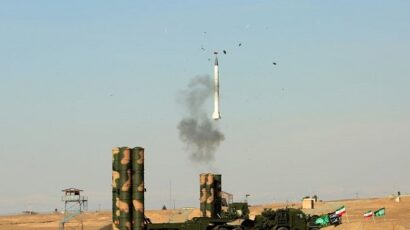Finding Article VI
By Hugh Gusterson | January 8, 2007
How the anti-nuclear movement remembered the nuclear powers’ obligation to complete disarmament.
The anti-nuclear movement has discovered Article VI of the Nuclear Non-Proliferation Treaty
(NPT).
In December, I attended a public hearing at the Energy Department on the Bush administration’s
plan for a revitalized nuclear weapons complex. Energy is planning to upgrade and consolidate its
weapons manufacturing and experimental facilities and, most controversially, to build a new
plutonium pit manufacturing facility. Every one of the speakers who testified that afternoon
opposed the government’s plan, dubbed Complex 2030. But what was striking was that so many gave
Article VI as a reason for opposing it.
The NPT, ratified by the United States in 1970, embodied a bargain between states with and
without nuclear weapons. The latter were guaranteed free access to nuclear energy technology as
long as they promised to forswear nuclear weapons. In exchange, the official nuclear powers agreed
to get serious about arms control and disarmament. This commitment was formalized in Article VI,
which obligated the existing nuclear powers to “pursue negotiations in good faith on effective
measures relating to cessation of the arms race at an early date and to nuclear disarmament, and on
a treaty on general and complete disarmament under strict and effective international control.”
Since 1970 the United States and the other nuclear weapons states have largely treated
Article VI as if it were decorative language with no force. I vividly remember interviewing one of
the leading nuclear weapons designers at Lawrence Livermore National Laboratory in 1988 (a man now
a top manager at the lab) and asking him about the U.S. commitment to end the arms race under the
NPT. I was a graduate student at the time. He scoffed at me, saying that the NPT contained no such
language. (I was so annoyed by this, that I xeroxed the text of the treaty and mailed it to him
immediately after the interview. I never heard back from him.)
Article VI did not enjoy much more visibility in American anti-nuclear circles at this time.
In the Reagan years, the rhetoric of the movement focused on the danger that the arms race would
trigger a catastrophic war between the superpowers. It was not part of the movement’s ensemble of
arguments–as it is now–to point out that the superpowers were reneging on their treaty
commitments by not ending the arms race. Insofar as this argument was made in the 1980s, it was
made in the nonaligned world by officials and pundits whose views were not reported by the U.S.
press.
So, what changed between then and now?
For one thing, even if the nuclear weapons complex remains active and strong, the Cold War
arms race and nuclear testing did end in the 1990s. In a world where there is no superpower arms
race and stockpile numbers are (albeit too modestly) declining, anti-nuclear activists can no
longer oppose the complex on the grounds that it is engaged in a headlong race to oblivion. In the
meantime, nuclear tests in India and Pakistan helped draw attention to arguments by South Asians
that the nonproliferation regime discriminates against emergent powers in the developing world, and
the mingling of anti-nuclear activists with developing world diplomats at the U.N. NPT Review
Conferences of 1995, 2000, and 2005 exposed American activists to these diplomats’ grievances
around Article VI.
The Indian and Pakistani tests have also–together with revelations about concealed nuclear
programs in Iran and North Korea–made many realize that, if the danger of the first nuclear age
was an incineration of the planet by two reckless superpowers, then the second nuclear age opens a
new horizon of danger: proliferation and the ignition of new regional nuclear arms races. For
activists seeking both to forestall these emergent arms races and to apply further pressure on the
U.S. nuclear weapons complex, Article VI offers the obvious point of connection.
Seen from one angle, this is progress. In the 1980s even the anti-nuclear movement treated
Article VI as if it was irrelevant. Now, finally, the complaints of the rest of the planet have
broken through into formerly insular nuclear debates in the United States where mainstream media
coverage of the 2005 NPT Review Conference (such as there was) did reference foreign diplomats’
sense of grievance around Article VI. On the other hand, the new visibility of Article VI in
American activist discourse surely bespeaks a strategic weakness in the movement’s rhetoric. Given
that the United States was able to withdraw from the Anti-Ballistic Missile Treaty, the
International Criminal Court, and the Kyoto accords without exciting domestic opposition, a
movement that opposes a revamped nuclear weapons complex on the grounds that it violates the spirit
of a 40-year-old arms control treaty is going nowhere fast.
If the anti-nuclear movement is to gain traction, as well as talking about Article VI, it
will need to give Americans more reasons of their own to oppose Complex 2030.
Together, we make the world safer.
The Bulletin elevates expert voices above the noise. But as an independent nonprofit organization, our operations depend on the support of readers like you. Help us continue to deliver quality journalism that holds leaders accountable. Your support of our work at any level is important. In return, we promise our coverage will be understandable, influential, vigilant, solution-oriented, and fair-minded. Together we can make a difference.
Topics: Columnists















